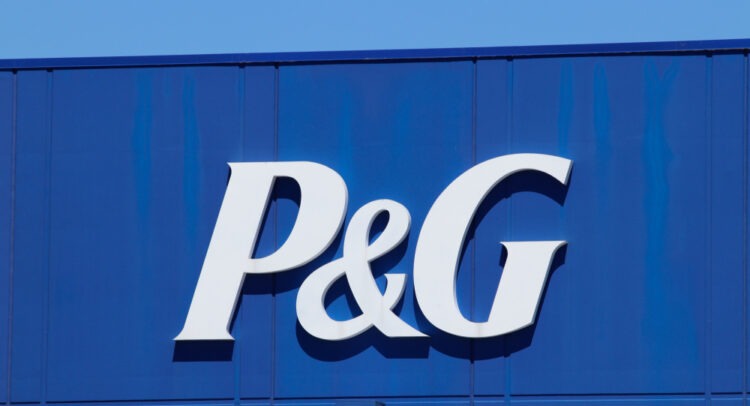Your cart is currently empty!
Procter & Gamble Stock: A Legacy of Consumer Brands

Procter & Gamble stock represents a position in one of the most enduring and influential consumer goods companies in the world. Founded in 1837 by William Procter and James Gamble, Procter & Gamble Co. (ticker: PG) has grown from a small soap-and-candles provider into a global leader in household and personal care products. With a market capitalization consistently in the $350–$400 billion range, Procter & Gamble stock stands as a symbol of reliability, innovation, and consumer trust across multiple generations.
The Foundations of Procter & Gamble Stock
The early success of Procter & Gamble rested on the ability to deliver consistent, high-quality products at scale. Its entry into branded consumer goods like Ivory soap and Crisco shortening established the company as a pioneer in mass marketing and product development. As the business expanded, Procter & Gamble stock became a long-term favorite among dividend-seeking investors due to its resilient cash flow, brand strength, and consistent product innovation. Over more than a century, the stock has weathered economic fluctuations while delivering value through dividend growth and steady appreciation.
Consumer Brands That Drive Growth
Procter & Gamble stock is underpinned by a diverse portfolio of globally recognized brands, including Tide, Pampers, Gillette, Crest, Olay, and Ariel. These brands have become household essentials in millions of homes due to P&G’s focus on product quality, marketing effectiveness, and global distribution. The company continues to invest in research and development, adapting formulations and packaging to meet changing consumer needs and sustainability expectations. Brand loyalty, combined with retail partnerships, ensures that Procter & Gamble stock remains resilient through changing consumer behavior.
Innovation and Product Development
Innovation lies at the heart of P&G’s long-term strategy and directly influences Procter & Gamble stock performance. From early advances in bar soap to modern improvements like plant-based ingredients, refillable packaging, and connected device platforms, the company continuously evolves its product offerings. Each innovation is measured against consumer expectations for efficacy, safety, and sustainability. This ingenuity enhances brand equity, supports premium pricing, and drives the long-term stability of Procter & Gamble stock.
Global Reach and Market Adaptation
Procter & Gamble products are sold in more than 180 countries worldwide, giving Procter & Gamble stock broad exposure to both mature and emerging markets. The company tailors its product lines to local consumer needs—offering affordable versions in developing regions and premium formats in advanced economies. Strategic investments in digital commerce and micro-distribution networks deepen market penetration. This global diversification helps insulate Procter & Gamble stock from volatility in any single geography, contributing to its reputation as a steady long-term holding.
Operational Efficiency and Cost Management
The performance of Procter & Gamble stock is further reinforced by the company’s focus on operational excellence. P&G uses scale and advanced supply chain systems to reduce costs, optimize inventory, and ensure consistent product availability. Its cost-saving initiatives and productivity programs enhance margins and support reinvestment in marketing, innovation, and sustainability. These efficiencies help maintain the dividend policy and generate free cash flow that investors rely on for long-term growth.
Dividend Reliability and Investor Confidence
Procter & Gamble stock is a fixture in income-oriented portfolios due to its remarkable dividend history. As a Dividend Aristocrat, P&G has increased its dividend for over 60 consecutive years. This track record reflects a conservative financial strategy and a commitment to returning value to shareholders. The combination of high-quality brands, global scale, and consistent dividend growth makes Procter & Gamble stock a core holding for investors seeking stability, income, and slow-but-steady appreciation.
Brand Reputation and Corporate Responsibility
Reputation and responsibility contribute to both investor confidence and consumer trust. Procter & Gamble emphasizes sustainability, ethical sourcing, and social impact through initiatives like water-saving manufacturing, recyclable packaging, and community hygiene campaigns. The company works with NGOs, governments, and local partners to address issues such as gender equality, education, and health access. This alignment with ESG criteria enhances the long-term integrity of Procter & Gamble stock and resonates with socially conscious investors.
Risks and Market Competition
Although Procter & Gamble stock is well-established, it faces challenges typical of consumer goods leaders. Shifts in consumer preferences, private-label competition, currency fluctuations, and raw material costs can affect margins and volume growth. Nonetheless, P&G’s scale, innovation pipeline, and brand strength serve as competitive advantages. Its ability to adapt packaging, marketing, and product lines to global trends ensures that Procter & Gamble stock remains resilient even amid retail disruption.
Future Outlook for Procter & Gamble Stock
Looking ahead, Procter & Gamble stock is positioned to benefit from continued urbanization, rising consumer standards, and sustainability trends. As digital commerce expands and packaging evolves, P&G’s innovation and operational scale will underpin value creation. The company’s commitment to brand development, dividend discipline, and global presence makes it a compelling option for long-term investors. Procter & Gamble stock is not just a stock—it is an investment in consumer essentials, innovation, and corporate endurance.

Mr. Rajeev Prakash
Rajeev is a well-known astrologer based in central India who has a deep understanding of both personal and mundane astrology. His team has been closely monitoring the movements of various global financial markets, including equities, precious metals, currency pairs, yields, and treasury bonds.
Featured Post
Financial Astrology Terminal
The Financial Astrology Terminal is a web platform that combines real-time U.S. market data (S&P 500, Nasdaq, Dow, Russell, key stocks and commodities like gold and silver) with planetary cycles, giving traders and investors astro-timing signals on top of normal charts and analysis.
